Chicago Auto Show provides futuristic review
By John Gilbert
CHICAGO, ILL. — The Chicago Auto Show prides itself on being the biggest of the four major U.S. auto shows, claiming that by the time the 105th show ends its 10-day run on February 17, more people will have filed into McCormick Place than will attend the November show in Los Angeles, January’s Detroit event, or April’s New York show.
The shows each take on their own personalities. In L.A., the emphasis is on downsizing, fuel efficiency, and alternative forms of fuel; in Detroit, it’s time for the domestic Big Three to beat there chests and proclaim that they’re back to prominence, and that it’s safe to once again boast about more power and size. Chicago is more like New York, where visiting the city is part of the allure. You can’t get swallowed up as easily in Chicago, but it is loaded with fine restaurants and blues nightclubs, which makes after-hours gatherings an easy way to fill in the blanks if there is a shortage of new introductions.
This year, a lot of introductions were made at Los Angeles, and the Detroit show was dominated by General Motors, with the Cadillac ATS winning North American Car of the Year, and Chrysler LLC, with the Ram 1500 winning North American Truck of the Year, and the newly unveiled Chevrolet Corvette taking home “Car of the Show” honors from the hometown observers.
Only a few interesting new introductions at Chicago left room for the Upper Midwest attendees to examine the numerous technical advances currently going on in the industry. A highlight of the show was the public introduction of the new Mercedes Style Coupe, a stunning compact sedan that was unveiled to the media in Detroit but looked glorious on its pedestal at the Chicago show.
Some who hadn’t seen it thought it looked like a large sedan, but while it resembles the “four-door coupe” look of the previous CLS Mercedes, this one will compete as a compact, a luxury vehicle that could change the competitive balance. The car was unveiled in a major Super Bowl advertisement, where a customer was willing to make a deal with the devil for such a beautiful car, but backs out when he finds he can buy it for under $30,000 — without selling his soul.
Nissan surprised many by turning its Nismo high-performance arm on not only the 370 Z sports car, but also on a Juke. The Nismo Juke is aimed at bringing down the high cost of high performance, while fitting the subcompact runabout with a 1.6-liter turbocharged 4-cylinder upgraded to 197 horsepower and 184 foot-pounds of torque, churning through all-wheel drive. In previous efforts, Nismo has built no-compromise hot performers, with the engines, transmissions, suspensions, exterior styling and even the seats and interiors given special treatment. For the Nismo gang, the Juke is a departure.
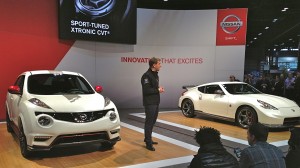
Nissan's high-performance Nismo arm unveiled a new Juke, left, and 370Z with upgraded power, performance and features. -- Photo by Jack Gilbert.
“The Juke is a polarizing vehicle, with a lot of innovations,” said Michael Bunce, chief product planner for Nissan’s large sedans and mid to compact SUVs. “Nobody is sure whether the Juke is a crossover or a car, but it doesn’t matter. We took a lot from the Nismo heritage. For example, the spoiler on the rear of the Juke Nismo really works to create 37 percent more downforce. We will offer some new features, such as a navigation system, with rear-view camera, and a Rockford-Fosgate audio upgrade. We aren’t saying the prices yet, but it will be comparable to the top-of-the-line SL grade.”
Chevrolet introduced a 2.0-liter diesel version of the compact Cruze, which will be a first for a U.S. company, and it announced intentions to go after Volkswagen’s popular Jetta, Golf and Beetle TDI models, which are currently the only compact vehicles with diesel power available.
Not to be outdone, Volkswagen showed off old-looking but new Beetle models, with the significance of a new engine lost on many observers. Ranier Michel, VW chief engineer, said, “The new Beetle GSR will have a 2.0-liter Turbo that is actually a new generation that will replace the 2.0 Turbo we’ve used for so long. It has 10 more horsepower, and it will go into the regular Golf Turbo, GTI and Jetta GLI.
Dodge Trucks, as they were formerly known, are now to be called “Ram” without the Dodge name, in an attempt to isolate the trucks into a separate brand. In Chicago, Ram unveiled its new ProMaster van — a tall, spacious commercial van that looks a lot like Nissan’s rival, and has a similarity to the Sprinter that Dodge used from Mercedes when Chrysler Corporation used to belong to Mercedes. The ProMaster comes from Fiat, the new owner of Chrysler LLC., and it has a chance to be enormously successful, Dodge officials say, because it already is very successful in Europe.
“It’s the top-selling commercial van in Europe,” said Brad Pugh, Ram’s lead engineer. “It outsells the Sprinter and the Ford Transit in Europe. When I got the chance to drive one with our Pentastar engine in it, it felt like a rocketship. All of our other vans have been pickup based, but this one has its own platform, with all four corners having active suspension. It is extremely comfortable, and it handles really well.”
The Pentastar V6 engine is a 3.6-liter dual-overhead-cam gem with variable valve timing. It replaces seven V6 engines that all were forms of stopgap designs to improve on existing engines. In all Chrysler and Dodge sedans, plus the Dodge Caravan, Jeep Grand Cherokee and now Wrangler, the engine has been very impressive, both for performance and fuel economy. Putting it into the full-size Ram 1500 pickup, with the new 8-speed transmission, was the key to SX version of the Forte, which is an eye-catching hatchback model. Hyundai’s Elantra won 2011 North American Car of the Year, then brought out an impressive companion GT 5-door hatchback on a longer wheelbase. Since the Forte rides on the Elantra chassis, the elongated and stylish Forte SX should make a similar 1-2 punch for Kia.
Many of the Asian carmakers showed off concept vehicles, which may predict uipcoming models, particularly those from Honda and Kia.
Mazda was comparatively quiet, having already shown the new Mazda6 sedan and already is shipping them to showrooms with its makeover Skyactiv design, power and transmissions. Mazda spokesman Jeremy Barnes said the new car will use a larger 2.5-liter Skyactiv 4-cylinder, and also will be coming with a 2.2-liter turbo-diesel. The diesel will become the first Japanese sedan powered by a turbo diesel, and it will be available the second half of 2013.
Barnes said the new CX-5 crossover utility is selling very well as the first all-out Skyactiv, and it, too will get thge 2.2 diesel to join the standard 2.0 gas engine. “The new 2.5 has 29 more horsepower than the 2.0,” Barnes said. “But in our test drives, we’re still seeing 32 miles per gallon with the larger engine and all-wheel drive. Like the CX-5, the Mazda6 will get Mazda’s new pair of transmissions; the company built its own 6-speed units both manual and automatic, with the automatic offering the advantages of a CVT, a direct-sequential, and a conventional automatic, but without any of the of the shortcomings each of those have.
Forte, Sorento bolster Kia armada for 2014
By John Gilbert
SCOTTSDALE, ARIZ. — Introducing two vehicles at the same time is a sketchy proposition for an auto manufacturer, because neither can attain full emphasis. But Kia is in a hurry, and with seven specific launches in the coming year, there is no choice but to package them together — which is why the 2014 Sorento SUV and Forte compact sedan both were presented together for introductory tests in the hills and desert of Arizona.
When I got my turn to drive the new Sorento and Forte, I was accompanied by Steven Hirashiki, a Kia product strategy fellow, instead of another auto journalist. That was good for a variety of reasons: I had to go directly from our lunch stop to the Phoenix airport for my return flight to Minnesota, he was able to answer some of my questions, I was able to respond to his questions about what I liked and didn’t like, and, mainly, I got to drive the whole day instead of trading turns behind the wheels.
In both cases, the vehicles performed well in assorted runs on highwayts, up0 and down hills, around curves, and in city traffic. While longer drives in both vehicles will be upcoming, my brief drives were properly impressive.
The Sorento has become one of the more successful and impressive SUVs for a changing marketplace, doing the work of large SUVs but with the agility and fuel efficiency of more compact models. And the new model improves on that already-impressive model in every way. The 3.3 engine upgrade is now truly upgraded because it has gas-direct-injection, a technique that improves both power and fuel-efficiency. Its appearance has been tweaked a bit, and the interior is easy to like. I found the performance good, although a couple of times it had a prominent jerk on acceleration at low speeds — s0mething that could improve as more miles accumulate. The steering was improved considerably, and so was the cornering stability.
The Forte never caught on in a big way when introduced in 2009, possibly due to the overwhelming response to the larger Optima and to the smaller Rio, plus the squarish Soul — which benefits by Kia’s reluctant but ultimate acceptance that the big hamsters are a lovable and popular trademark. The new Forte upgrades its design features, and its more-dashing exterior is matched by the interior Plus, the steering has a much better feel, as does the steering wheel itself, and the cornering is more precise and better reacting, as is the power in the optional 2.0-liter engine. Read more
Key still the key, in new Cadillac XTS
By John Gilbert
My son, Jack, and I had to take a little trip, and since I had two test-drive cars at my disposal at the time, I chose the one that would get better fuel economy. That meant we were going to leave behind a Cadillac XTS Platinum Collection sedan.
Now, most people might figure that was a bad move, because the XTS is the new full-size car from Cadillac, coming out as a 2013 model in a year that is big — and about to get bigger — for Cadillac, with the new compact ATS on the verge of winning the North American Car of the Year award in a few weeks. And who could mind being pampered in all that super-luxury of the XTS?
In General Motors version of downsizing, the XTS replaces the STS and all Caddies larger than that, including the DeVille, topping the new stable that is led by the CTS, with the new ATS eagerly joining on the bottom end.
Nevertheless, equipped with GM’s corporate 3.6-liter V6, with 304 horsepower and264 foot-pounds of torque, the front-wheel-drive XTS can be figured to get mid-20s fuel economy at best, and with the all-wheel-drive option, probably less. So we left it behind, in all its plushness, and drove away. I left word for my wife, Joan, who drives everything that comes into the driveway of the Gilbert Compound, that she should drive the XTS as much as possible and let me know her impressions when we returned.
Among its many features, the XTS has keyless entry, and, of course, push-button ignition. I have expressed my opinions frequently about push-button ignitions, as a solution for which there is no problem. I like the idea of being able to unlock your doors with a touch of the key-fob, but once inside the car, it seems to me that since you need the key to be with you in order to activate the push-button start, then you might as well use the key in the ignition. Besides, when you don’t need the key, it’s easy to let someone accompany you to a destination and turn over the driving responsibilities while you go your merry way with the key still safely in your pocket. But I digress. Actually, though, it is not a digression.
So there we were, driving across Wisconsin, when my cell phone rang. It was Joan. We’ve got a problem, she started, with one of those veteran-marital “we” collectives that meant she had a problem, but was more than eager to share it.
Because of the keyless ignition, and her concerns about leaving the key someplace, she set it in the cup-holder of the XTS and prepared to drive into town. Joan is pretty active, and she often goes for brisk walks along the North Shore of Lake Superior. She thought she’d probably take a walk on her way back, so she went back to the house to get her walking shoes. When she returned to the car, she thought she’d put her shoes and her jacket, in the trunk. Good move. She slammed the trunklid down, and it closed with a nice, classy “thunk.” Bad move.
As she heard the trunk close securely, she walked around to the driver’s door — and found it was locked. So were all the other doors.
Incredibly, she realized, closing the trunklid automatically and electronically locked all four doors. And the trunk. She was locked out, and the keys were safely inside, in the cup-holder. That’s when she called me. For a few miles, we wracked our brains, but could come up with no solutions. Then I thought of OnStar — GM’s exclusive customer-nanny that could direct you anywhere by GPS. Read more
Domestic optimism rises at Detroit show
By John Gilbert
DETROIT, MICH. — Domestic automakers should have a big home-field advantage at Detroit’s North American International Auto Show, and they certainly did, kicking off the press preview days of the show, which runs through January 27, by sweeping the Car of the Year and Truck/Utility of the Year awards, after claiming four of the six finalist slots.
The Cadillac ATS claimed the North American Car of the Year honors, beating out the Honda Accord, while the Ford Fusion — once the odds-on favorite — slipped to third because of a combination of production recalls, delays in introducing its plug-in hybrid, and gripes about its connectivity system. With the 49 jury members allotting 10 points among finalists, the ATS wound up with 207 points, the Accord 159 and the Fusion 124.
Chrysler Group, LLC, was represented by the Ram 1500 full-size pickup truck, which had an even more substantial edge in winning the North American Truck/Utility of the Year. The Ram piled up 261 points to outdistance the Mazda CX-5, with 142, and the Ford C-Max, with 87. The CX-5 is an entirely new compact crossover SUV with Mazda’s technologically advanced Skyactiv drivetrain, and the C-Ma is a small utility wagon powered by only a hybrid or all-electric drivetrain, and while both met the new guidelines of the independent jury’s combined truck and utility segment, jury board members commented that voters obviously were attracted to the fact that the Ram was a “real” truck.
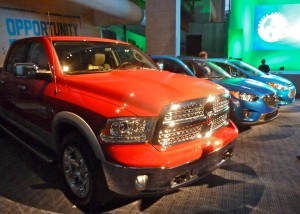
"Don't call me Dodge" Ram 1500 outpointed the Mazda CX-5 and Ford C-Max to win Truck/Utility of the Year.
Both award winners are comparatively traditional, with the Ram powered by either the Hemi V8 or a new Pentastar V6, while the compact Cadillac ATS has either a V6 with rear-drive, or a turbocharged 4. They were in stark contrast to the other two finalists in both car and truck competition, which featured high-tech high-mileage options — as did the array of flashy new vehicles displayed during the two press preview days at Cobo Hall. Vehicles from all over the world emphasized futuristic electric or electrically-boosted vehicles with high mileage potential.
Among the highlights were an all-new compact CLA from Mercedes, a downsized “4-door coupe” shape with a 211-horsepower turbocharged 4-cylinder and a stunning drag coefficient of 0.22, which the company claims is best in the industry. A revised 4-Motion system and a collision-prevention assist will be features. The CLA will be widely promoted at the Super Bowl — which, incidentally, will be played in New Orleans, at a facility now known as the “Mercedes-Benz Superdome.” Mercedes is also unveiling the revised E-Class mid-range sedan and a new S-Class luxury car. The E-Class will come in coupe, convertible and sedan, and also returns as a station wagon, as well as a high-performing AMG E-63. BMW introduced the 4-Series, which will become the name for all 3-Series coupes and convertibles, and its MINI division displayed a Cooper-Works sporty version of its 4-door Clubman. Read more
Cruel end can’t dim glow of UMD star Vogler
By John Gilbert
When the UMD football team lost an incredible 57-55 game at Missouri Western last Saturday, it was one of the cruelest finishes imaginable. Without question, the Bulldogs were up against a Griffon team that was their mirror-image, with an outstanding quarterback, and an explosive offense that could overrun pretty much any defensive scheme.
The Bulldogs trailed 14-6 in the first quarter, thanks to a pair of Andrew Brees field goals. They wrested a 20-14 lead at halftime. They held the lead at 28-21 after three quarters, but they were tied 35-35 at the end of regulation. The teams both drove for touchdowns in the first overtime, and again in the second overtime, inflating the score to 49-49. The rules say that if you get to a third overtime, teams must go for 2-point conversions if they score a touchdown. Central Missouri roared in for a touchdown, and made the 2-points for a 57-49 lead.
Then UMD quarterback Chase Vogler pulled out a couple of his special, career-long magic tricks to get the Bulldogs close enough, and Austin Sikorski crashed over from the 3 for his third overtime touchdown to make it 57-55. On the mandatory 2-point conversion, Vogler obviously was going to run a sprint out himself, maybe spotting a receiver, or maybe going for the end zone himself. He took the snap, and did his little shuffle step back and to the left. But incredibly, his foot caught the heel of a blocking teammate, and in an instant, Vogler fell to the turf.
End of game, end of season, end of fabulous, record-setting career.
Chase Vogler’s legacy at UMD is secure. He will forever be recalled for his four years of heroic play at quarterback, where he was always efficient, sometimes spectacular, and often found extracting victories from what appeared to be certain defeats.
He never seemed comfortable — more like tolerant — of the accolades that came his way. Watching him come out of Rosemount High School in the Twin Cities to jump into the starting role as a freshman, when teammate and fellow-senior Jon Lynch injured his elbow in the second game and was out for the season. Vogler took over, and his ability forced itself to the surface game after game. He became the first true freshman to start at quarterback in 47 years, and led the Bulldogs to a 10-0 conference title, and an 11-2 overall record.
He ran the ball so well that he didn’t need to pass much, that I was curious whether coach Bob Nielson thought Vogler would be good enough, or did he plan to recruit another quarterback who might be a better passer. “Chase is not a great passer, but he is a great athlete,” said Nielson at the time. “We can make him a better passer, but you can’t make someone a better athlete.”
Nielson was right, and Vogler took UMD on a 15-0 odyssey in 2010, winning the Bulldogs their second NCAA Division II championship in three years. As a junior, Vogler and the Bulldogs went 11-3, in something close to a miracle finish, when repeatedly they would pull off narrow escapes to win, right on into the playoffs. Quarterbacks tend to get too much credit when teams win, but invariably, Vogler was making decisions at the line of scrimmage on numerous pivotal plays that led directly to victories.
Vogler’s four years produced incredible numbers. Vogler rushed for 184 yards and two touchdowns in 29 carries, and was 14-20 passing for 195 yards, for a game total of 379 yards. That puts his four-year tally at 2,903 yards rushing, passing Corey Veech to place fifth all-time in UMD’s record book. He gained 2,307 yards more passing, and he moved up to No. 2 behind Ted Schlafke for total yards with 10,480. His final record, in 52 games started, is 46-6 — and three of the six losses came in NCAA DII playoff games, meaning he was 39-3 in four regular seasons.
That’s why the ending was so cruel. A slight trip, and Vogler might have regained his footing; he might have stumbled a couple of steps and found a way to pitch the ball to Sikorski. But he fell immediately, down flat, and had to end his fantastic career watching the ecstatic Griffons run past him to their bench for a wild celebration.
Classy as usual, Vogler said he might have tripped over his center’s foot, and yes, it was a disappointing way to end the season. Missouri Western coach Jerry Partridge said: “That kid is one of the very best quarterbacks I’ve eve coached against. That’s why they won a national title a couple years ago.”
Bob Nielson said: “If there’s a better playmaker in Division II football, I haven’t seen him.”
By the way, Nielson was right on about Vogler three years ago, too. He made Vogler a better passer, but nobody needed to make him a better athlete.
VOLLEYBALL REACHES NCAA
The UMD volleyball team had the benefit of competing in the first Northern Sun Intercollegiate Conference meet last weekend. It’s a benefit because the NSIC is the strongest volleyball league in DII, and UMD joins Concordia of St. Paul and Southwest State as the big three in the conference. UMD beat Concordia in Duluth early in the season, and Southwest State beat UMD. On the final regular-season weekend, Concordia beat Southwest, to leave all three tied for the title. When they decided who would be No. 1 seed, it was Concordia, so the conference meet was held at the St. Paul campus.
The Bulldogs flashed their usual force in the first round, beating Winona State in three sets. But in the semifinals, UMD was beaten by Southwest State, also in three sets, and came home. Surprisingly, Southwest State then beat Confordia for the playoff title, the first home loss suffered by Concordia all season.
When the NCAA Division II seedings were delivered Sunday night, Concordia held on to the No. 1 seed in the region, with Southwest No. 2. UMD (28-4) is No. 5, and must open against No. 4 Central Missouri (26-6) in the first round, which will be next Thursday (November 29). If the Bulldogs can win that match, they would probably run smack into Southwest State at the Central Regional, while Concordia is in the opposite bracket.
The interesting twist on the Central Region is that it will be held — guess where? — right back at Concordia of St. Paul. So right after beating Concordia on its floor, Southwest State must go right back there and try to win two rounds to get the chance to do it again. And UMD’s proud and talented Bulldogs are in perfect position to cruise right back down Interstate 35 and foul up those plans of a rematch.
HOME AND AWAY
We had an idea that this may be a tough rebuilding season for both the UMD men’s and women’s hockey teams. It’s been more than tough for the men, who split with both Ohio State and Notre Dame to open the season, then moved into WCHA play where the Bulldogs lost and tied at home against Wisconsin, then lost twice at Nebraska-Omaha, before going to Grand Forks and tying and losing against North Dakota — the team formerly known as Fighting Sioux.
That leaves the Bulldogs 0-4-2 in league play, and it looks odd to see UMD at the bottom of the league standings. Proves how spoiled we all became the last four years, during the “Jack Connolly Era.” This weekend, the Bulldogs return to AMSOIL Arena for the first time in a month, to face St. Cloud State. The Huskies, by the way, are on an upsurge from their own rebuilding, and stand 4-2 in league play after splitting with North Dakota and taking last weekend off.
The UMD women lost sparkplug winger Audrey Cournoyer, a senior who has decided to retire from playing with some chronic back pain that won’t go away. But the Bulldogs got things together to sweep a pair of 4-1 victories at St. Cloud State last weekend, rising to 4-5-1 in league play with a trip to North Dakota this weekend.
BCS MUST GO
The Bowl Championship Series might be interesting, but we once again are being insulted by the clear prejudice of the voters for the Southeast Conference. For the past decade, the SEC has been the best college football league in the country, so ESPN has hitched its prodigious influence to it and shamelessly promotes the SEC teams at every opportunity.
Recall that a week ago, Alabama was No. 1, with Oregon or Kansas State No. 2 and No. 3, and Notre Dame No. 4. The fact that all four were undefeated stirred up the obvious attraction a four-team playoff could be this year — say, Notre Dame vs. Alabama, and Oregon vs. Kansas State, with the winners to meet for the crown.
But Alabama was beaten, quite soundly, by Texas A & M two Saturdays ago. Last Saturday, I wore out my channel changer trying to watch both Oregon against Stanford and K-State against Baylor. The Baylor Bears put it all together for a stunning 52-24 victory over Kansas State’s previously unbeaten outfit. Then Stanford, an outstanding defensive team, found a way to harness Oregon’s explosive Blur Offense running attack and caught the Ducks 14-14, and beat them 17-14 in overtime.
Notre Dame, which beat Wake Forest, remains undefeated and rightfully took over the No. 1 slot in the national polls and the BCS ranking. But here’s where the bias comes in. Alabama lost to a great upset bid to Texas A&M, but now vaults up to No. 2 after winning 49-0 over West Carolina. (West Carolina?) Then Georgia (10-1) moves up to No. 3 after winning 45-15 over Georgia Southern (Georgia Southern?) What’s all this garbage about the grueling SEC schedules? Meanwhile, Florida wins 23-0 over Jacksonville State (Jacksonville State?) and rises to No. 4 in the BCS picture, while Oregon, an overtime loser to a Stanford team that was by far better than any of the other top teams played last weekend, drops to No. 5, and Kansas State, caught by surprise by a potent Baylor outfit, drops to No. 6.
If that’s not enough evidence of prejudice among the SEC Kool-Aid drinkers, both Alabama and Georgia got first-place votes in the coaches poll, ahead of Notre Dame. Now, I don’t think the Fighting Irish are the best college football team in the country, but they remain undefeated while the others have all stumbled, so they deserve the No. 1 slot. For now. I think Notre Dame my fall this Saturday, at Southern California, even though the Trojans were ambushed by another explosive team, UCLA, in a 38-28 shootout last Saturday.
Oregon faces another huge game, against arch-rival and No.15 Oregon State this Saturday. Alabama and Georgia, the two SEC darlings of the voters, both have “rivalry games” too, because Alabama faces Auburn and Georgia plays Georgia Tech. Now, Georgia Tech is a capable 6-5, but the Engineers play in the Atlantic Coast Conference, not the SEC. And the Alabama-Auburn game is usually a great game, but this season, Auburn is 0-7 and in last place in Alabama’s West Division of the SEC. While the guys at ESPN will try to fan that Alabama-Auburn game to a tube-watching frenzy, and they will sing the Crimson Tide’s glory after they win the game, but don’t be fooled: The oddsmakers have Alabama as an early 31 1/2-point favorite!
I’ve said before that I enjoy watching Oregon play more than any other team, but I was objectively impressed with the great game plan and execution of Stanford in taking down the Ducks. My hope, then, is that Alabama and Georgia find a way to lose before playing each other in the SEC championship game, where one of them will have to lose, just to see how much it will take before the Ducks (and Kansas State) climb back into consideration. In my little campaign to suggest that this season, the Pac-12 has more elite teams than the SEC, by the way, keep an eye on Stanford playing UCLA Saturday.


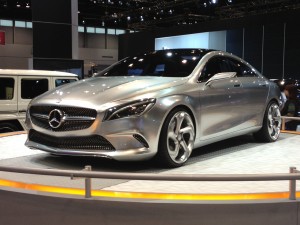
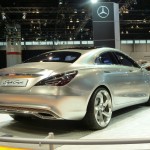
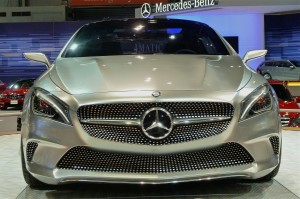

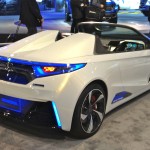
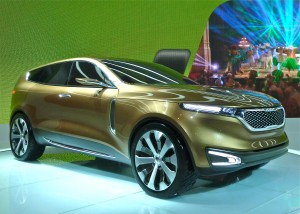
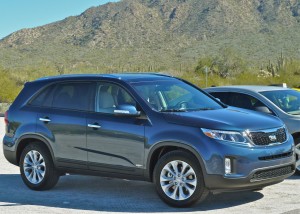
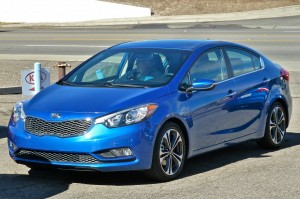
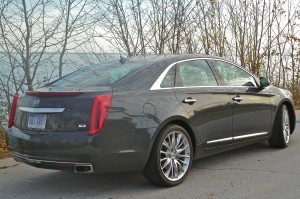
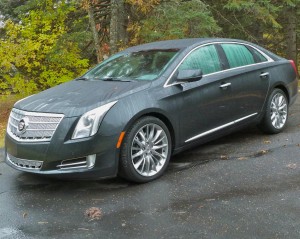
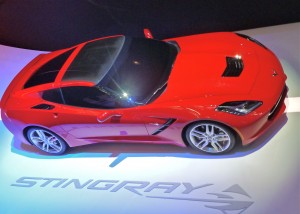
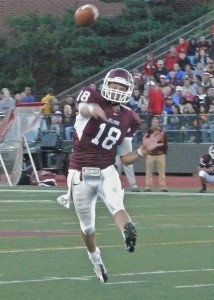
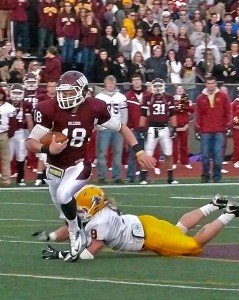
 John Gilbert is a lifetime Minnesotan and career journalist, specializing in cars and sports during and since spending 30 years at the Minneapolis Tribune, now the Star Tribune. More recently, he has continued translating the high-tech world of autos and sharing his passionate insights as a freelance writer/photographer/broadcaster. A member of the prestigious North American Car and Truck of the Year jury since 1993. John can be heard Monday-Friday from 9-11am on 610 KDAL(www.kdal610.com) on the "John Gilbert Show," and writes a column in the Duluth Reader.
John Gilbert is a lifetime Minnesotan and career journalist, specializing in cars and sports during and since spending 30 years at the Minneapolis Tribune, now the Star Tribune. More recently, he has continued translating the high-tech world of autos and sharing his passionate insights as a freelance writer/photographer/broadcaster. A member of the prestigious North American Car and Truck of the Year jury since 1993. John can be heard Monday-Friday from 9-11am on 610 KDAL(www.kdal610.com) on the "John Gilbert Show," and writes a column in the Duluth Reader.